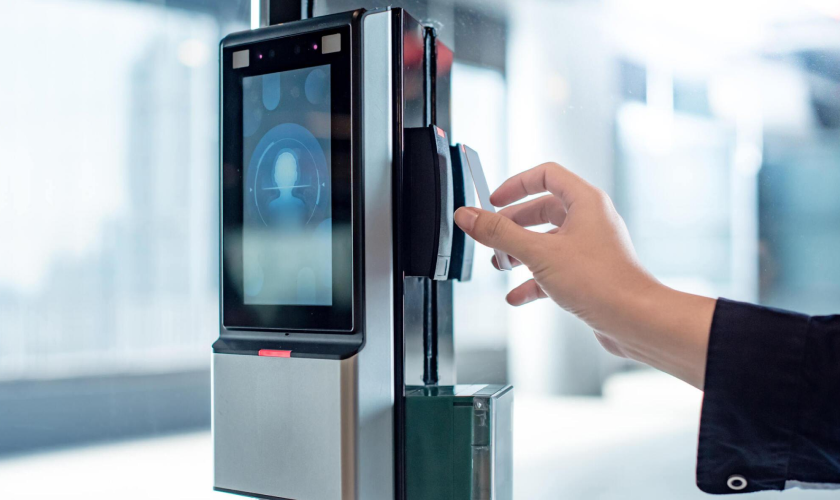Gone are the days when the conventional lock-and-key security method was used. With evolving technologies, you now have better options to revamp the security of your gym facility, right?
So, are you looking forward to boosting the security of your gym by incorporating a physical access system? Well, it must be pretty overwhelming. Don’t worry! The trend of using gym key card systems has become popular. Leveraging a gym swipe card entry system, you can not only maintain security but enhance convenience and applicability as well.
If you want to know if gym key card systems are good enough for physical access, this is your post! In this blog, we will explore more about gym key card systems so that you can make a smart decision.
What are gym key card systems?
A gym key card is a type of access control in which radio-frequency identification (RFID) technology is used to interact with the reader. A key card system has a card reader, credentials, and lock that inhibits any unauthorized entry.
When it comes to working a gym key card system works by validating the data stored on the card when you swipe it through the reader. Therefore, a key card system grants access, considering the privileges assigned to the card owner.
Understanding the components of key card systems

Key card systems play a crucial role in ensuring tight security at your gym facility. However, there are several components on which a key card system comprises, and those are as follows:
Controller: It is the main component of a key card system that basically sends signals to open or close the door by validating the user database.
Key cards: These are access cards with a chip that contains all the required personal data to ensure access to the gym facility.
Lock: The lock uses an electronic mechanism to open or shut the door whenever a key card is swiped. Depending on the type of system you install, it can also be triggered automatically or manually.
Scanner: It is also known as a reader that reads the information on the card and sends a signal to the controller.
Multi-factor authentication devices: For additional security, a key card system comes with MFA devices. Therefore, some systems ask for an additional PIN code to ensure security.
Access software: The gym swipe card entry system also requires gym access control software to save user data, monitor activity, and manage access authorization.
The working mechanism of a gym key card system
The working mechanism of a gym key card system is very intricate, providing tight security and protection to your gym facility. A key card system for the gym typically works through RFID technology or magnetic stripe access technology. In this procedure, the user taps, swipes, or uses proximity to access the gym facility.
The key card is equipped with a chip that stores all the user data. So, when the user swipes their card into the system, the reader scans the information and sends a signal to the controller. Then, the controller validates the information by checking it against the database, and if the user has the privilege to access the facility, it grants access.
Otherwise, the authorization is rejected, and the user is refused permission to make an entry. In addition, this situation may enhance security measures by triggering alarms or alerts to security personnel.
The system may also use multi-factor authentication. In this case, the card reader system can be set up to display a keypad. This way, the user can easily enter their particular PIN code to access the facility.
Lastly, to make this system work seamlessly, there is a gym access control software solution at the backend, which holds everything together. Using it, you can effortlessly manage the control over access.
What are the types of key card access control?

The following are the types of key card access control that you must be aware of:
NFC card
Near Field Communication (NFC) cards are the most popular cards used in access control systems. The reader can easily read the information on these cards using a smartphone or NFC-enabled device. Since NFC cards come with a writable NFC chip, they can be used to store numbers, messages, or any microdata.
In addition, NFC cards use radio-frequency signals and work on a 13.56 megahertz frequency band. To make them work, users have to touch the NFC token and bring it closer to the reader by about 0.39 inches so that the data can be scanned easily.
Smart card
Smart cards come with a microcontroller for contactless access control. The reader can scan the data from a distance of around 4 inches. In addition, the technology used in smart cards offers tight security and encryption, allowing users to validate their authenticity to make an entry. Lastly, smart card access control is more efficient than RFID tags.
Proximity card
Proximity or Proxcards use low-frequency RFID cards that work usually on a 125 kilohertz LF band. The reader can scan proximity cards from a distance of up to 15 inches, making them contactless access cards. In addition, proximity cards can store a lot of information, and they do not need to be inserted into the scanner.
Swipe card
Swipe cards work just like magnetic stripe cards since you swipe these cards in order to transfer information to the reader. There are small polarized magnets in swipe cards, creating different voltages throughout the magnetic read-head. It further measures the varying voltages and converts them into a binary credential to permit access.
Wiegand key card
Wiegand key cards are designed with a magnetic phenomenon known as the Wiegand Effect. They work by leveraging a ferromagnetic alloy of iron, cobalt, and vanadium and provide a particular code for the reader to validate the access. In addition, Wiegand key cards can communicate with the reader and store more information than prox cards.
Comparison table of different types of key cards
| Features | NFC Cards | Smart Cards | Proximity Cards | Swipe Cards | Wiegand Cards |
| Technology | Near field communication | Integrated circuit (IC) | Radio frequency (RF) | Magnetic stripe | Wiegand effect |
| Communication range | Short (up to 4cm) | Short to medium | Short to medium | Contact (swiping) | Short to medium |
| Data transfer speed | Fast | Moderate to fast | Moderate | Moderate | Moderate to fast |
| Security | Moderate to high | High | Moderate | Moderate | Moderate to high |
| Encryption | Yes | Yes | No | No | No |
| Storage capacity | Limited | High | High | Limited | Limited |
| Application | Access control, payments | Access control, payments | Access control, payments | Access control, payments | Access control |
| Integration | Widely integrated | Integrated with systems | Commonly integrated | Integrated with systems | Integrated with systems |
| Cost | Moderate to high | Moderate to high | Low to moderate | Low to moderate | Low to moderate |
| Durability | High | High | Moderate to high | Moderate | Moderate to high |
| Battery Requirement | Passive (No battery) | Active or passive | Passive (No battery) | No battery required | No battery required |
Gym key card systems: Are they good enough for physical access?
Yes, gym key card systems are good enough for physical access. There are numerous benefits to gym key cards, but so are their limitations. So, let us have a glance over the advantages and disadvantages of gym key cards.
Advantages of using gym key card systems
Since key card systems are commonly used in commercial properties, there are numerous benefits behind them.
Enhanced security
Key card systems allow you to control the entries into your facility or sensitive areas. Using key cards, you can generate unique codes for the users to authorize their identity in order to unlock the door. In addition, each individual requires a specific credential code to unlock the facility, and there are no shared PIN codes that can easily compromise security.
Better tracking
A gym key card access control system allows you real-time tracking so that you can monitor activities in your gym facility. Using this system, you can keep an eye on who is coming and going from the gym facility. This data will help you in case there is any data breach or suspicious activity.
More flexibility
Key card systems are highly flexible since they give you the authorization to add or remove anyone from access privileges. In addition, you can easily make modifications, making it a scalable choice. Furthermore, you can program expiration dates, and they automatically become inactive on that date.
Increased convenience
Key card systems eliminate the burden of carrying keys with you. In addition, they are more secure and reduce manual labor, enhancing efficiency along with convenience. Also, they are more adaptable in this digital world.
Streamlined administration
Leveraging gym key card systems, you can streamline administrative tasks effortlessly. The access control system allows you to manage everything remotely. So, it is not only convenient for members and staff but also for owners. In addition, it saves you not only time and effort but also money.
Disadvantages of using gym key card systems
With benefits, there are challenges as well. Before incorporating a gym key card system into your business, you must be aware of its drawbacks:
Security risks: Key card systems are prone to security risks, including theft, damage, and duplicate cards.
Inefficiency: Gym key cards can be quite inefficient and time-consuming due to malfunctions in the system, such as sometimes being unable to read cards.
Onboarding delays: Issuing key cards can take a long time, which may result in onboarding delays and revenue loss.
Advantages vs. Disadvantages
| Advantages | Disadvantages |
| They are affordable and versatile, so they are a perfect fit for 24/7 operating gyms. | They can be easily lost or stolen, so that security can get compromised easily. |
| Key cards allow gym owners to customize the cards with users’ details and authorization levels. | Key cards are not personally identifiable so security can be breached easily. |
| They provide a decent granular control. | They can be easily exchanged and grant access to outsiders. |
| You can easily integrate key card systems with gym management software to easily control access. | The security can be compromised by sharing codes as well. |
Final takeaway
Gym key card systems are a decent choice for physical access since they offer versatility, practicality, and efficiency in managing gym access. With the right system, you can enhance the security and scalability of your gym business. So, do thorough research before making any purchase; after all, it is all about safety.
